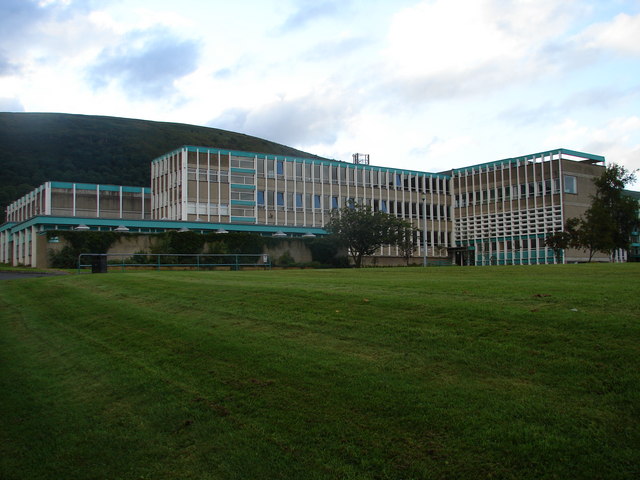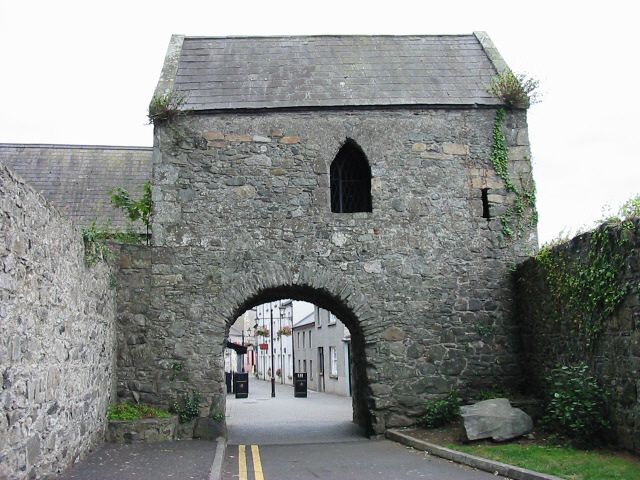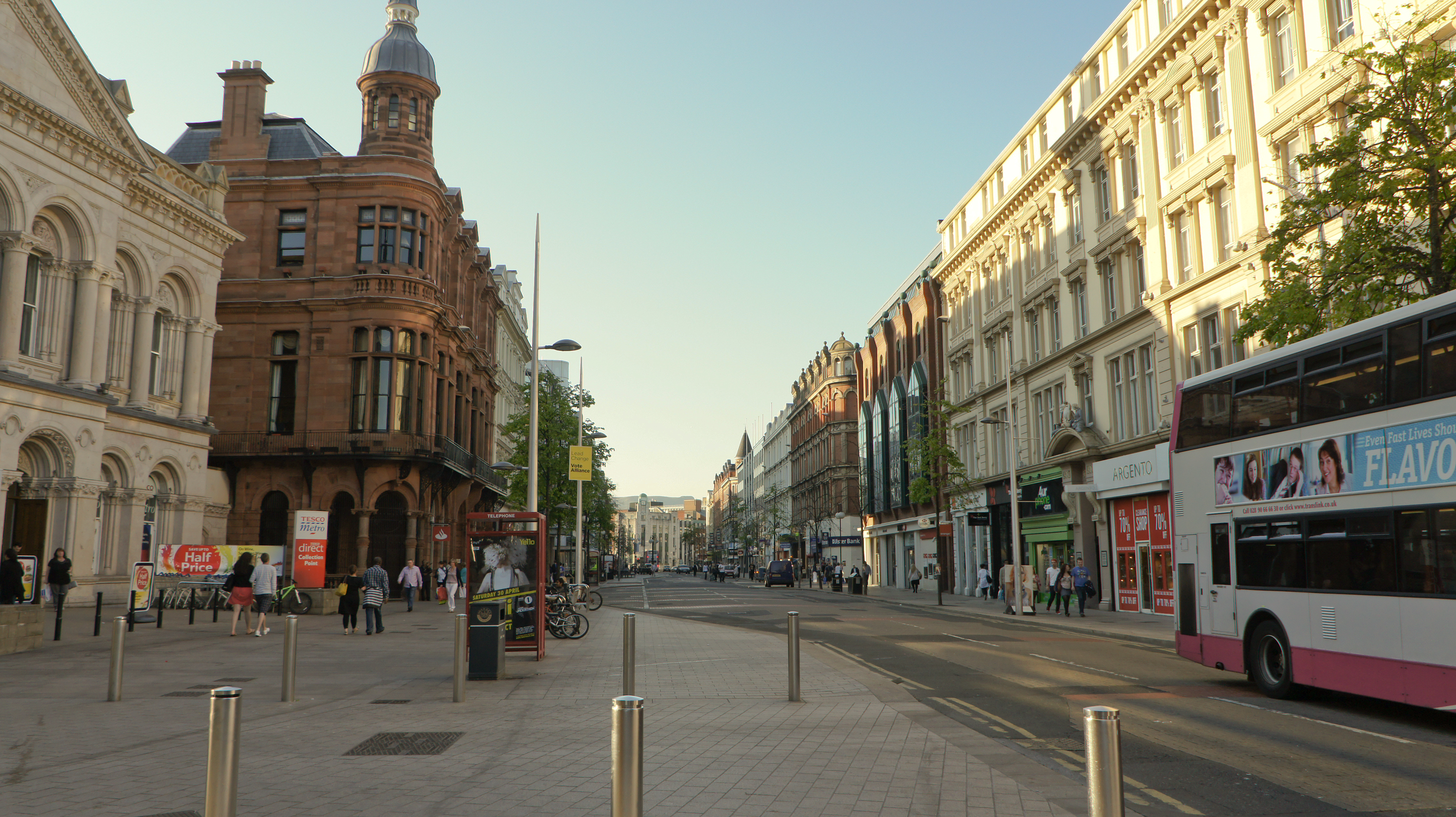|
William Conway (cardinal)
William John Cardinal Conway (22 January 1913 – 17 April 1977) was an Irish cardinal of the Roman Catholic Church who served as Archbishop of Armagh and Primate of All Ireland from 1963 until his death, and was elevated to the cardinalate in 1965. He was head of the Catholic Church in Ireland during the reforms of the Second Vatican Council. Early life and education Conway was born in Dover Street, Belfast, on 22 January 1913 and baptised in St. Peter's Pro-Cathedral. He was the eldest of nine children. His father, Patrick Joseph Conway, was a house painter and ran a paint shop near Royal Avenue; his mother, Annie Donnolly, came from Carlingford on the Cooley Peninsula in the north of County Louth. He attended Boundary Street Primary School, St Mary's CBS (now St Marys CBGS Belfast), Queen's University, Belfast; St Patrick's College, Maynooth; Pontifical Gregorian University, Rome. He emerged with a doctorate in Canon Law ''summa cum laude'' tying for a gold medal with a G ... [...More Info...] [...Related Items...] OR: [Wikipedia] [Google] [Baidu] |
His Eminence
His Eminence (abbreviation H.Em. or H.E. or HE) is a style (manner of address), style of reference for high nobility, still in use in various religious contexts. Catholicism The style remains in use as the official style or standard form of address in reference to a cardinal (Catholicism), cardinal of the Catholic Church, reflecting his status as a Prince of the Church. A longer, and more formal, title is "His (or Your when addressing the cardinal directly) Most Reverend Eminence". Patriarchs of Eastern Catholic Churches who are also cardinals may be addressed as "His Eminence" or by the style particular to Catholic patriarchs, His Beatitude. When the Grand master (order), Grand Master of the Sovereign Military Order of Malta, the head of state of their sovereign territorial state comprising the island of Malta until 1797, who had already been made a Reichsfürst (i.e., prince of the Holy Roman Empire) in 1607, became (in terms of honorary order of precedence, not in the act ... [...More Info...] [...Related Items...] OR: [Wikipedia] [Google] [Baidu] |
Second Vatican Council
The Second Ecumenical Council of the Vatican, commonly known as the , or , was the 21st Catholic ecumenical councils, ecumenical council of the Roman Catholic Church. The council met in St. Peter's Basilica in Rome for four periods (or sessions), each lasting between 8 and 12 weeks, in the autumn of each of the four years 1962 to 1965. Preparation for the council took three years, from the summer of 1959 to the autumn of 1962. The council was opened on 11 October 1962 by Pope John XXIII, John XXIII (pope during the preparation and the first session), and was closed on 8 December 1965 by Pope Paul VI, Paul VI (pope during the last three sessions, after the death of John XXIII on 3 June 1963). Pope John XXIII called the council because he felt the Church needed “updating” (in Italian: ''aggiornamento''). In order to connect with 20th-century people in an increasingly secularized world, some of the Church's practices needed to be improved, and its teaching needed to be presente ... [...More Info...] [...Related Items...] OR: [Wikipedia] [Google] [Baidu] |
Roman Catholic Diocese Of Down And Connor
The Diocese of Down and Connor, ( ga, Deoise an Dúin agus Chonaire) is a Latin Church ecclesiastical territory or diocese of the Catholic Church in Northern Ireland. It is one of eight suffragan dioceses in the ecclesiastical province of the metropolitan Archdiocese of Armagh. The See is vacant; Archbishop Noel Treanor is currently the Apostolic Administrator pending the appointment of a new bishop. Territorial remit The territorial remit of the diocese includes much of counties Antrim and Down, including the cities of Belfast and Lisburn and the large towns Antrim, Ballymena, Bangor, Carrickfergus, Downpatrick, Holywood, Larne and Newtownards10000--->. The population of the diocese is about one million, of which approximately 30% are Roman Catholic with Sunday mass attendance estimated at 20%. There are currently 88 parishes and ministries in the diocese served by fewer than 100 priests, though the significance of individual parishes has been overtaken by the development ... [...More Info...] [...Related Items...] OR: [Wikipedia] [Google] [Baidu] |
Canon Law
Canon law (from grc, κανών, , a 'straight measuring rod, ruler') is a set of ordinances and regulations made by ecclesiastical authority (church leadership) for the government of a Christian organization or church and its members. It is the internal ecclesiastical law, or operational policy, governing the Catholic Church (both the Latin Church and the Eastern Catholic Churches), the Eastern Orthodox and Oriental Orthodox churches, and the individual national churches within the Anglican Communion. The way that such church law is legislated, interpreted and at times adjudicated varies widely among these four bodies of churches. In all three traditions, a canon was originally a rule adopted by a church council; these canons formed the foundation of canon law. Etymology Greek / grc, κανών, Arabic / , Hebrew / , 'straight'; a rule, code, standard, or measure; the root meaning in all these languages is 'reed'; see also the Romance-language ancestors of the Engli ... [...More Info...] [...Related Items...] OR: [Wikipedia] [Google] [Baidu] |
Pontifical Gregorian University
The Pontifical Gregorian University ( it, Pontificia Università Gregoriana; also known as the Gregorian or Gregoriana,) is a higher education ecclesiastical school ( pontifical university) located in Rome, Italy. The Gregorian originated as a part of the Roman College, founded in 1551 by Ignatius of Loyola, and included all grades of schooling. Its chairs of philosophy and theology received Papal approval in 1556, making it the first institution founded by the Society of Jesus (Jesuits). In 1584, the Roman College was given a new home by Pope Gregory XIII, after whom it was renamed the Gregorian University. It had distinguished scholars in ecclesiastical fields as well as in natural science and mathematics. Only the theology and philosophy departments of the Gregorian survived the political turmoil in Italy after 1870. Today, the Gregorian has an international faculty and around 2,750 students from over 150 countries. History Founding Ignatius of Loyola, the founder of the ... [...More Info...] [...Related Items...] OR: [Wikipedia] [Google] [Baidu] |
St Patrick's College, Maynooth
St Patrick's Pontifical University, Maynooth ( ga, Coláiste Naoimh Phádraig, Maigh Nuad), is the "National Seminary for Ireland" (a Roman Catholic college), and a pontifical university, located in the town of Maynooth, from Dublin, Ireland. The college and seminary are often referred to as Maynooth College. The college was officially established as the ''Royal College of St Patrick'' by Maynooth College Act 1795. Thomas Pelham, the Chief Secretary for Ireland, introduced a Bill for the foundation of a Catholic college, and this was enacted by Parliament. It was opened to hold up to 500 students for the Catholic Priesthood of whom up to 90 would be ordained each year, and was once the largest seminary in the world. In the final decades of the 20th century, and early 21st century, the seminary intake decreased in line with the wider fall in vocations across the Western developed world, with a record low in 2017 of six first year seminarians. This fall was due, in part, to ... [...More Info...] [...Related Items...] OR: [Wikipedia] [Google] [Baidu] |
Queen's University, Belfast
, mottoeng = For so much, what shall we give back? , top_free_label = , top_free = , top_free_label1 = , top_free1 = , top_free_label2 = , top_free2 = , established = , closed = , type = Public research university , parent = , affiliation = , religious_affiliation = , academic_affiliation = , endowment = £70.0 million , budget = £395.8 million , rector = , officer_in_charge = , chairman = , chairperson = , chancellor = Hillary Clinton , president = , vice-president = , superintendent = , vice_chancellor = Ian Greer , provost = , principal = , dean = , director = , head_label = , head = , academic_staff = 2,414 , administrative_staff = 1,489 , students = () , undergrad = () , postgrad = () , doctoral = , other = 2,250 (Colleges) , address = , city = Belfast , state = , province = , postalcode = , country = Northern Ireland , campus = Urban , language = , free_label = Newspaper , free = ''The Go ... [...More Info...] [...Related Items...] OR: [Wikipedia] [Google] [Baidu] |
St Marys CBGS Belfast
St Mary's Christian Brothers' Grammar School (St Mary's CBGS) is a Roman Catholic boys' grammar school A grammar school is one of several different types of school in the history of education in the United Kingdom and other English-speaking countries, originally a school teaching Latin, but more recently an academically oriented secondary school ... in Belfast, Northern Ireland. History The origins of the school can be traced to St Mary's School which was established in Falls Road, Belfast, Divis Street by the Irish Christian Brothers in 1866. The Brothers had been invited by Patrick Dorrian, Bishop of Down and Connor, to educate the working class children of the area. In 1929, a new secondary school was built in the nearby Barrack Street. The students were largely drawn from the surrounding district but also began to attract some from across Belfast and wider afield. Due to the growing student population, it was decided in the 1960s to build a new school. This opened in a ... [...More Info...] [...Related Items...] OR: [Wikipedia] [Google] [Baidu] |
County Louth
County Louth ( ; ga, An Lú) is a coastal county in the Eastern and Midland Region of Ireland, within the province of Leinster. Louth is bordered by the counties of Meath to the south, Monaghan to the west, Armagh to the north and Down to the north-east, across Carlingford Lough. It is the smallest county in Ireland by land area and the 17th most populous, with just over 139,100 residents as of 2022. The county is named after the village of Louth. Louth County Council is the local authority for the county. History County Louth is named after the village of Louth, which in turn is named after Lugh, a god of the ancient Irish. Historically, the placename has had various spellings; , , and (see Historic Names List, for full listing). is the modern simplified spelling. The county is steeped in myth, legend and history, and is a setting in the epic. Later it saw the influence of the Vikings, as seen in the name of Carlingford Lough. They also established a longphort a ... [...More Info...] [...Related Items...] OR: [Wikipedia] [Google] [Baidu] |
Cooley Peninsula
The Cooley Peninsula (, older ''Cúalṅge'') is a hilly peninsula in the north of County Louth on the east coast of Ireland; the peninsula includes the small town of Carlingford, the port of Greenore and the village of Omeath. Geography The peninsula contains the Cooley Mountains, the highest of which, Slieve Foy, is also the highest peak in County Louth at . To the north is Carlingford Lough and the border with Northern Ireland; to the south is Dundalk Bay. The peninsula is ringed by the R173 regional road. The peninsula is geologically diverse, with 440-million-year-old Silurian greywacke sandstones in the northwest and southwest, 340-million-year-old limestones in the east, and 60-million-year-old volcanic rocks forming the Cooley Mountains. Antiquity In Irish mythology, Cooley (Old Irish Cúalnge') was the home of the bull Donn Cuailnge, and the site of the ''Táin Bó Cúailnge'', "Cattle Raid of Cooley". Ancient monuments in Cooley include the Proleek Dolmen, wh ... [...More Info...] [...Related Items...] OR: [Wikipedia] [Google] [Baidu] |
Carlingford, County Louth
Carlingford (; ga, Cairlinn) is a coastal town and civil parish in northern County Louth, Ireland. For the purposes of local government, the town is part of the Dundalk Municipal District. It is situated on the southern shore of Carlingford Lough with Slieve Foy mountain as a backdrop, sometimes known as Carlingford Mountain. It is the main town on the Cooley Peninsula. Located on the R176/ R173 roads between Greenore and Omeath village, Carlingford is approximately 27 km north east (by road) from Dundalk (15.6 km directly), 90 km north of Dublin and 11 km south of the border with Northern Ireland. Carlingford won the Irish Tidy Towns Competition in 1988. Carlingford still retains its medieval layout noticeable by the narrow lanes and small streets. Tholsel Street is where the last of the medieval walled town's gates can still be seen, called "The Tholsel" which apparently was also used as a gaol, on Tholsel Street itself there is still a 16th-century To ... [...More Info...] [...Related Items...] OR: [Wikipedia] [Google] [Baidu] |
Royal Avenue
Royal Avenue is a street in Belfast, Northern Ireland. In the Cathedral Quarter in the heart of Belfast city centre, as well as being identified with the more recent Smithfield and Union Quarter, it has been the city's principal shopping thoroughfare since its establishment in 1881. Today Royal Avenue is one of Belfast's main commercial centres and is home to the £40 million shopping complex Westfield CastleCourt. The top end of Royal Avenue was formerly named John Street and the bottom end was named Hercules Street. Location Royal Avenue is in the Cathedral Quarter. Beginning from the Donegall Place junction with Castle Place and Castle Street, which is the hub of Belfast city centre, the road runs north to the North Street crossing where the former Bank of Ireland once stood. A fire in summer of 2018 caused the front part of the building to burn leaving only the back of the building standing. Royal Avenue then angles northeast to the Donegall Street intersection co ... [...More Info...] [...Related Items...] OR: [Wikipedia] [Google] [Baidu] |








